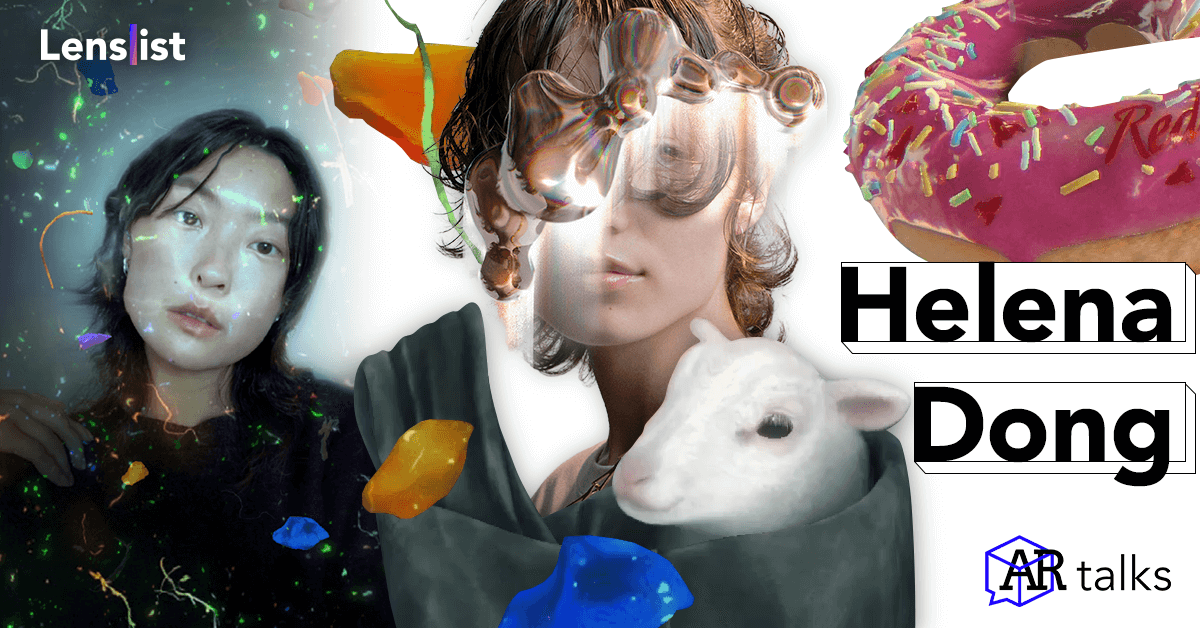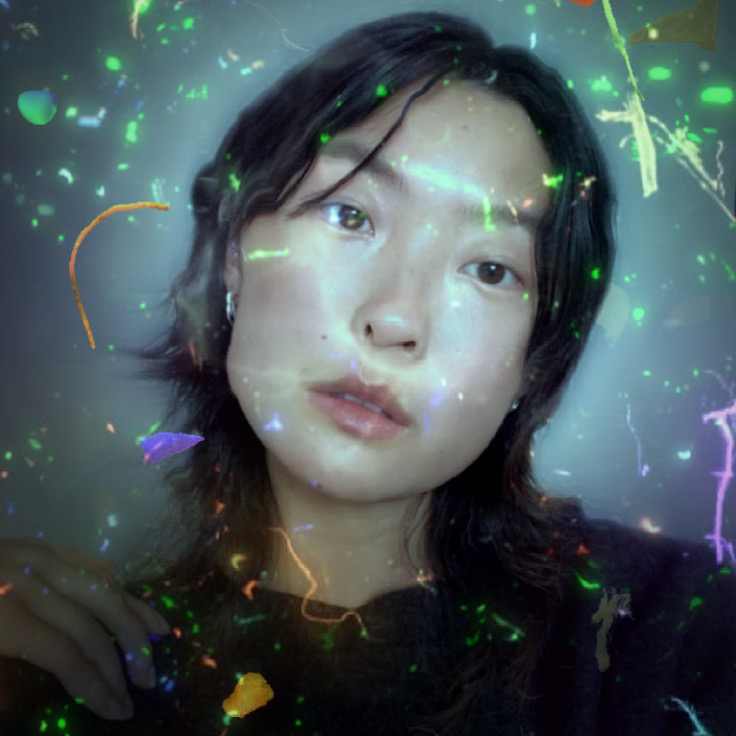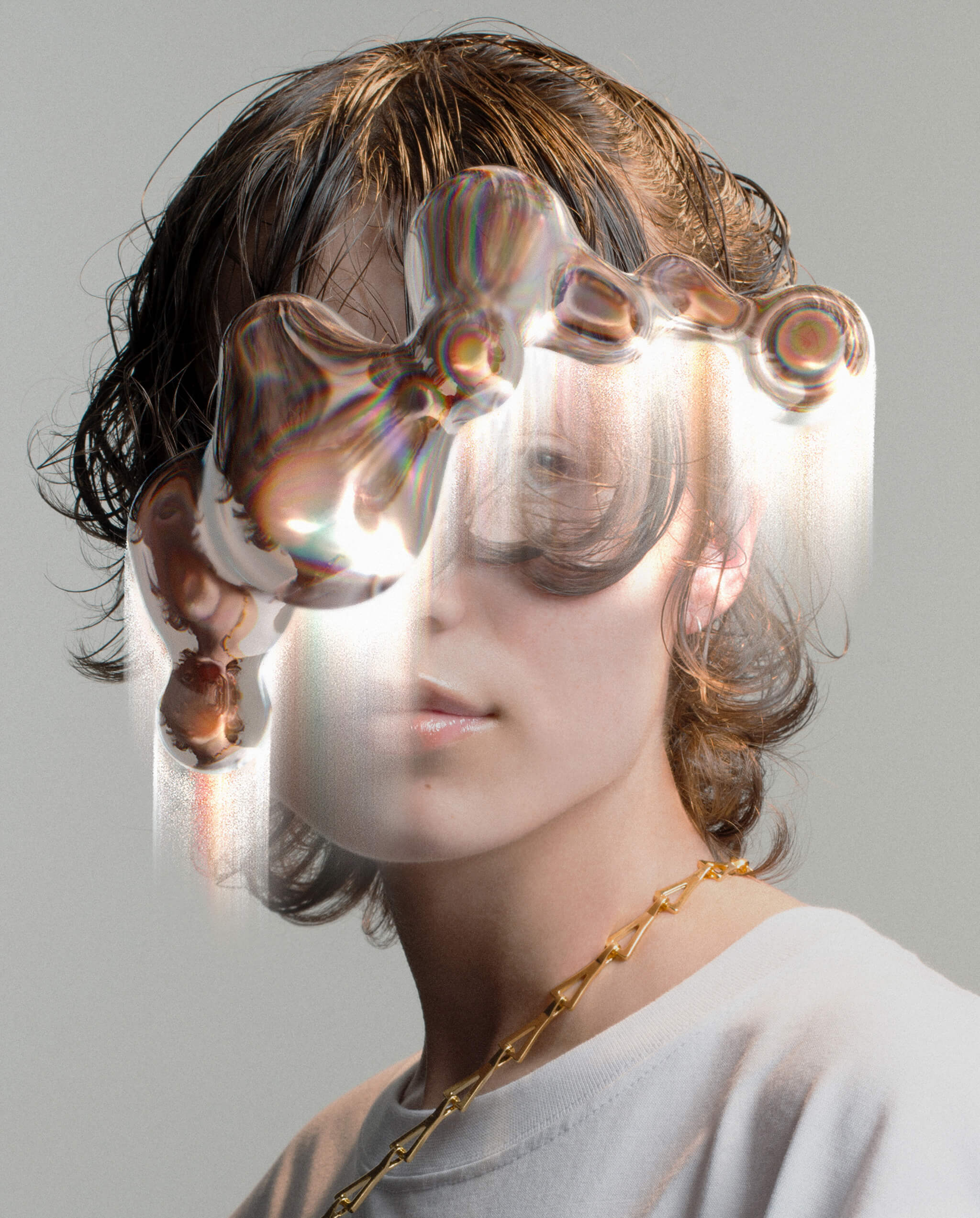AR Talk | Helena Dong

Today’s AR Talk has landed straight from NYC – and awaits for you with exclusive content. ⭐️ Starring Helena Dong – an interdisciplinary designer and creative technologist blending AR with fashion and visions of the future. Her incredible talent and concepts have been recognized by Brands and Creators all over the world – from Nike to A24. Is there anything essential for her while working on collaborations? How did technology influence her art? Learn more about the personal and professional sides of Helena’s story. 💜
⭐️⭐️⭐️
You are an experienced Creator when it comes to working with the biggest brands…Nike, A24, Selfridges. What are your criteria when taking on branded projects?
 My projects with the aforementioned clients may have received more publicity, but every project request—irrespective of scale—indicates to me that people are curious to engage in the space of AR, and that they appreciate my work. For that, I’m always open to collaborating.
My projects with the aforementioned clients may have received more publicity, but every project request—irrespective of scale—indicates to me that people are curious to engage in the space of AR, and that they appreciate my work. For that, I’m always open to collaborating.
Understandably, some collaborations are better aligned than others. In determining a project’s feasibility, the fundamental step is to assess the brief against my schedule, the budget and the complexity. My secondary criteria would then pertain to the project’s visibility, its impact on the audience, the scope for experimentation and the relationships that it fosters. These become particularly crucial when there is an imbalance across the first three points, as they help with evaluating how the project relates to my work and the creative community at large.
Before accepting any request, I’d ask myself: does the brand image and its ethos align with me? Does this experience serve the audience instead of corporate needs? Would those in my social and professional circles, or my future collaborators, see value in this work? Was I once also in a position of wanting to attempt something innovative with a limited budget? Do I have the liberty to decline? Decision-making is often nuanced. Ultimately, it’s a matter of ascertaining whether it is something that I want to partake in, or one that I need to in order to continue my practice.
Which of your many collaborations was the most memorable? What made it so special and what have you learned through it?
 Moments of learning arise out of every collaboration, which makes it nearly impossible to isolate just one. So far, those moments have ranged from having acquired a specific technical understanding to observing the best practices in client presentations, to gaining literacy of new platforms and operating cohesively with an in-house team. I’ve also found it interesting attuning to the different systems established by my collaborators.
Moments of learning arise out of every collaboration, which makes it nearly impossible to isolate just one. So far, those moments have ranged from having acquired a specific technical understanding to observing the best practices in client presentations, to gaining literacy of new platforms and operating cohesively with an in-house team. I’ve also found it interesting attuning to the different systems established by my collaborators.
Truth be told, I have a habit of accepting projects that are slightly beyond my immediate capability with the intention of learning on the job. Hence, being comfortable with the state of not knowing is one of the many attributes that have been instilled in me, as long as I’m actively seeking solutions.
What do you think is the most appealing aspect of AR as a medium for artists and designers? Is this the possibility of creating something straight out of your imagination, surprising users with extraordinary ideas, access to a wide audience or something else?
 Personally, it’s the combination of all of the above. AR effectively lends itself to the creation and consumption of experimental artefacts, as well as social and time-bound experiences with relative ease of access; there is an undeniable sense of play associated with the medium. Beyond its transient entertainment qualities, AR has the capacity to reorient the ways in which we interact with our environment, with each other and with ourselves, allowing existing objects to reflect different values, and subsequently amplifying the relationship that transpires between the creator and the audience.
Personally, it’s the combination of all of the above. AR effectively lends itself to the creation and consumption of experimental artefacts, as well as social and time-bound experiences with relative ease of access; there is an undeniable sense of play associated with the medium. Beyond its transient entertainment qualities, AR has the capacity to reorient the ways in which we interact with our environment, with each other and with ourselves, allowing existing objects to reflect different values, and subsequently amplifying the relationship that transpires between the creator and the audience.
In numerous ways, I see AR as a tool for prototyping, recontextualizing and disseminating experiences beyond what’s physically possible. This type of immediacy and mutability makes AR an appealing medium throughout the creative process.
Every person that interacts with your art through AR has a different personal experience. Art isn’t limited to museums and galleries anymore. Do you think that this new level of engagement will be the next big step in the art world? Can you, as a designer and creative technologist, recognize and identify with this change?
 This sentiment could apply to every creative medium, given the argument that art is essentially the experience it affords. Today, the interactive nature of AR is made more apparent because so much of our focus is directed at the evolution of the technology, the novelty, and the satisfaction of having something respond instantly to our touch.
This sentiment could apply to every creative medium, given the argument that art is essentially the experience it affords. Today, the interactive nature of AR is made more apparent because so much of our focus is directed at the evolution of the technology, the novelty, and the satisfaction of having something respond instantly to our touch.
AR often encourages a double take, but the gamified approach of taking art outside the traditional setting isn’t new. Even before the popularization of digitally interactive artworks—such as those that experiment with phones, GPS, video games and the internet—Surrealist artists in the 1930s created works in the form of board games and playing cards, and artists associated with the Fluxus movement between the 1960s and 70s built puzzles, games and instruction manuals in order to construct scenarios that would highlight the performative potential of everyday objects.
Comparatively, our intent of using AR to visualize ideas and to magnify personal experiences isn’t that different from analogue formats, the main point of distinction would exist in this obscurity between the imaginary and the real, which offers visceral experiences that alter our perception of the environment.
Whether or not this style of engagement is compelling would depend on the motives of the artist and the context in which it’s carried out. While I recognize AR as an instrument that’s open to participant agency with endless possibilities, I’m also mindful that too much attention on the technology itself could result in experiences devoid of artistic integrity. Therefore, I see this level of interactivity not as the ‘next big step’ in art, but rather one of the many approaches that artists could take in continuing those creative explorations.
The fusion between technology and art is present and we can see it expanding every day. Knowing that you were a Fashion Major – how do you see and prepare yourself for the upcoming trend of digital clothing? Do you think this is the future we have to get ready for?
 My fascination with the convergence of fashion, technology and experience is precisely what drove me to explore AR in the first place. I’m not particularly susceptible to trends; what genuinely elicits my interest in the emerging field of digital fashion is the dynamics between the designer, the object and the wearer, and how those may be re-defined and accentuated through alternative modes of presentation.
My fascination with the convergence of fashion, technology and experience is precisely what drove me to explore AR in the first place. I’m not particularly susceptible to trends; what genuinely elicits my interest in the emerging field of digital fashion is the dynamics between the designer, the object and the wearer, and how those may be re-defined and accentuated through alternative modes of presentation.
Digital attires wield immense potential in how we dress ourselves on screen, and the simulation technology is able to significantly reduce the labor and materials associated with garment sampling. To better align this discussion with AR, let’s consider its role as clothing for our pixel-native personas, in which case it could be construed as a separate category within the fashion discipline—a parallel category for our parallel world, if you may. For now, this version caters to specific scenarios across gaming, e-commerce, social media and video communications. With time, digital fashion will most likely proliferate and perhaps even infuse with traditional fashion in ways that render them practical beyond screens; embracing multi-modality and innately permeating our lives.
In saying so, it’s worthwhile reminding ourselves during the development of these digital counterparts that tech-oriented solutions aren’t always the most appropriate, given the vastly different needs, abilities and preferences of the global population. As makers and technologists, it’s imperative that we remain empathetic to those differences in designing for the future.
 i-D ASIA / BENDING MINDS AND FUTURES
i-D ASIA / BENDING MINDS AND FUTURES
Transference, an AR effect later manipulated into an editorial image for i-D Asia. Photography by Edward Mulvihill.
Do you think the new wave of fashion designers will be more focused on digital fashion rather than traditional? Are the environmental aspects and easier access to resources going to be the turning point in the fashion industry?
 The pandemic certainly ushered in a flow of new-gen designers and compelled existing fashion houses to traverse this space. For an industry that’s constantly seeking and producing newness with frantic urgency, it’s likely to champion digital fashion not purely out of environmental concerns, but for the sake of generating hype and maintaining relevance, both of which are quite valid for any profit-driven production.
The pandemic certainly ushered in a flow of new-gen designers and compelled existing fashion houses to traverse this space. For an industry that’s constantly seeking and producing newness with frantic urgency, it’s likely to champion digital fashion not purely out of environmental concerns, but for the sake of generating hype and maintaining relevance, both of which are quite valid for any profit-driven production.
Working effectively with digital clothing would require one to possess equal knowledge of 3D design as well as the nuances of conventional fashion, and this new generation of designers is more inclined to acclimatize to an environment with irregular configurations. The number of institutions that are building this into their curriculums is already increasing, so it is only a matter of time before 3D fashion becomes an intrinsic step in the pre-production of garments, and makes its way across a myriad of use cases.
Currently, aside from garment sampling, viable pathways for digital fashion designers pertain to the dressing of 3D characters and the replication of products for purposes including archiving, presentations and try-ons. While powerful in the absence of real garments, these digital artefacts are still only addressing the optical qualities of fashion and it would be fair to say that our appreciation for clothing typically exceeds the visual sense. For instance, the tactility of materials against your skin, how it makes you feel as it wraps around your body, the social and historical contexts in which something is worn, or the masterful construction of internal seams that you would only discover upon taking it off. For reasons as such, traditional fashion will remain the anchor of the industry while digital fashion alleviates those manufacturing demands.
When it comes to creating AR effects, what is the most important part for you – the visual aesthetic, the technical sophistication or the concept hidden behind the final projects?
 It’s case-by-case with every AR effect, especially when I’m addressing the needs of a client or collaborating with others. But broadly speaking, at the conception of each project, the desire to achieve balance takes precedence over any single category. The intention here is to make the most use out of what I know—in design and in technical development—to construct a pocket reality that is aesthetically resonant, contextually relevant, and speaks to the audience. Admittedly, this intention often ends up manifesting into the visual style of the effect or a heightened sense of detail.
It’s case-by-case with every AR effect, especially when I’m addressing the needs of a client or collaborating with others. But broadly speaking, at the conception of each project, the desire to achieve balance takes precedence over any single category. The intention here is to make the most use out of what I know—in design and in technical development—to construct a pocket reality that is aesthetically resonant, contextually relevant, and speaks to the audience. Admittedly, this intention often ends up manifesting into the visual style of the effect or a heightened sense of detail.
⭐️⭐️⭐️
Visit Helena’s website to capture even more inspiring works and collaborations from various fields of art, and follow her into an aesthetic world on Instagram!

